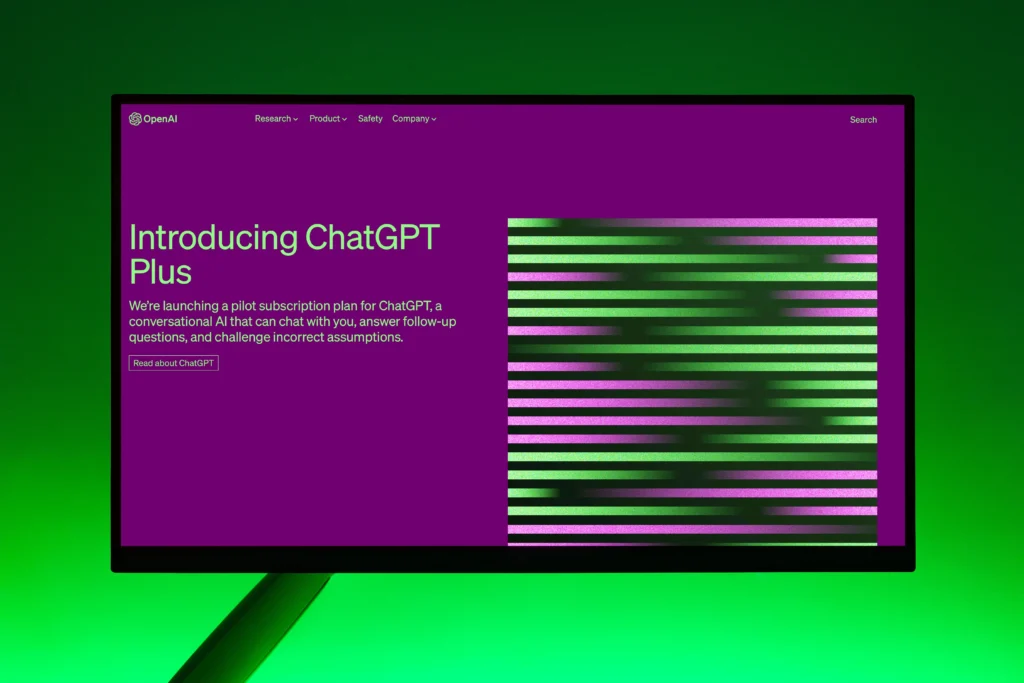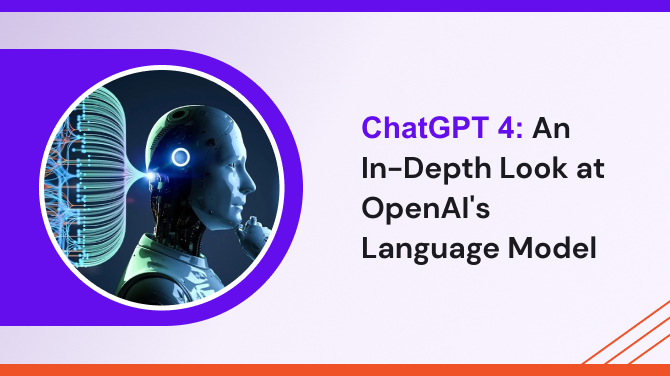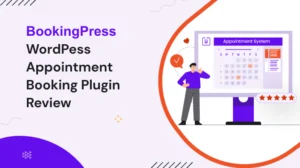What is ChatGPT 4 & How to utilize it?
Artificial intelligence has come a long way in recent years, particularly in the field of natural language processing. ChatGPT (Generative Pre-trained Transformer) is one of the most significant AI language models, developed by OpenAI.
ChatGPT 4 is the latest version of this model, which has been making waves in the industry due to its advanced capabilities and potential applications. In this article, we’ll take an in-depth look at ChatGPT 4, exploring what it is, what it can do, and what its future might hold.
Introduction of ChatGPT 4

At its core, ChatGPT 4 is an AI language model designed to process and generate human-like text. It is based on the transformer architecture, which was introduced in 2017 by Google researchers. The transformer architecture is a neural network that uses self-attention mechanisms to process input data, enabling it to recognize patterns and relationships in language.
ChatGPT 4 is a massive neural network that has been trained on an enormous amount of text data. Specifically, it was trained on a diverse range of texts, including web pages, books, and scientific papers, among others. This data was used to teach the model how to recognize language patterns and relationships, enabling it to generate human-like responses to text inputs.
One of the key differences between ChatGPT 4 and previous versions is the scale of its training. It was trained on an astonishing 45 terabytes of text data, compared to 13.5 terabytes for its predecessor, ChatGPT 3. This massive amount of data allows for more accurate predictions and better handling of rare or complex language structures.
Advancements in ChatGPT 4
One of the most significant advancements in GPT 4 is its ability to process longer sequences of text than its predecessors. This is possible due to the use of reversible layers, which allow the model to store more information without sacrificing its ability to process it efficiently. GPT 4 can also process text in multiple languages, making it a powerful tool for cross-cultural communication.
Another important feature of GPT 4 is its ability to understand and generate more complex language structures. For example, it can recognize and generate idioms and metaphors, which were previously challenging for language models to process. Additionally, it can generate coherent and contextually appropriate responses to prompts, making it useful for chatbots, customer service, and other applications.
Applications of ChatGPT 4
The potential applications of GPT 4 are vast and varied. One of the most significant is its potential use in customer service and chatbots. With its ability to understand and generate natural language responses, ChatGPT 4 could revolutionize the way we interact with customer service representatives and chatbots, making these interactions more efficient and natural.
ChatGPT 4 also has significant implications for the healthcare industry.
It could be used to analyze large volumes of medical records, identifying patterns and relationships that could be useful for diagnosis and treatment. Additionally, it could be used to create chatbots that could provide patients with personalized medical advice and support.
ChatGPT 4’s ability to generate text that sounds human-like also opens up new opportunities in content creation. For example, it could be used to write news articles, product descriptions, or social media posts. Additionally, GPT 4 can assist in writing code and generating automated reports, potentially saving businesses significant time and resources.
However, the use of AI language models like GPT 4 also raises concerns about privacy, bias, and the future of work. The model’s ability to generate human-like text could be exploited to spread misinformation or generate fake news, for example. Additionally, the widespread adoption of AI language models could lead to job displacement for human workers.
Limitations and Ethical Considerations
Like any AI language model, GPT 4 has its limitations and ethical considerations. One significant concern is the potential for bias in the data it was trained on. If the data is biased, the model will replicate that bias, leading to potentially harmful outcomes. OpenAI has acknowledged this concern and has stated its commitment to responsible AI development and use.
It is also important to consider the potential misuse of GPT 4. For example, it could be used to create fake news or generate hate speech. Again, OpenAI has stated its commitment to addressing these concerns and promoting the responsible use of AI technology.
Future Developments
play an increasingly important role in our society. OpenAI is already working on improving ChatGPT 4 and developing new language models with even greater capabilities. Some potential developments include models that can understand and generate more complex types of media, such as audio and video.
Furthermore, AI language models like GPT 4 have the potential to revolutionize how we interact with technology. Imagine a future where we can converse with our devices in a natural and intuitive way, or where language barriers are no longer a hindrance to communication. AI language models could help bridge the gap between cultures and languages and open up new opportunities for collaboration and innovation.
Conclusion,
ChatGPT 4 is a remarkable achievement in the field of natural language processing, and its potential applications are vast. However, we must also be mindful of the ethical considerations that come with this technology, such as bias and privacy concerns. By approaching AI development responsibly, we can harness the power of GPT 4 and other language models to create a better future for all.
I hope this outline helps you in writing your article about ChatGPT 4!





